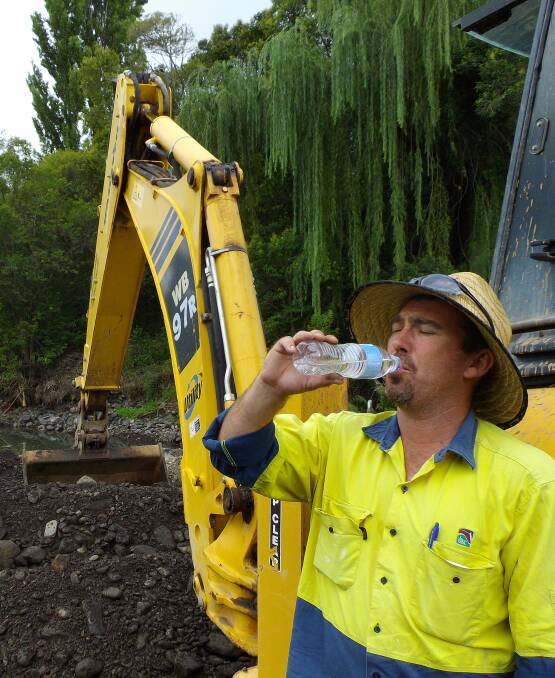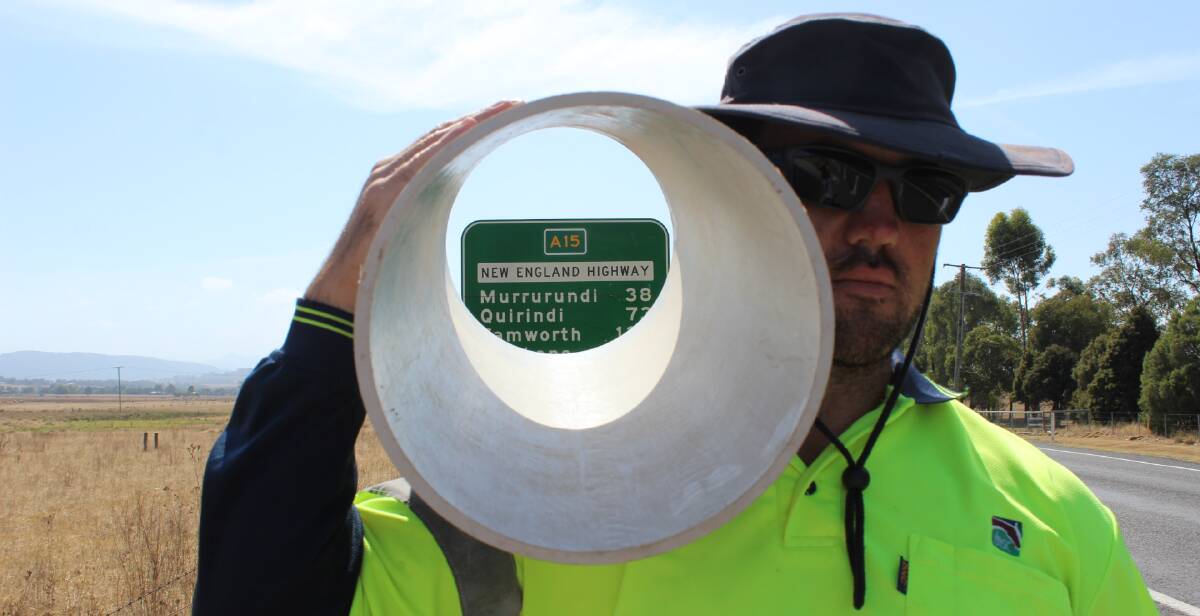
The flow of drinkable water should not be taken for granted.
Subscribe now for unlimited access.
$0/
(min cost $0)
or signup to continue reading

Upper Hunter Shire Council invests millions of dollars to maintain and develop water infrastructure.
Each year Council supplies around 2,390,000,000 litres of clean water to 4400 homes, businesses, schools, hospitals and other public facilities.
There are daily residual chlorine tests, weekly microbiological tests and chemical testing analysed by the NSW State Laboratory and supplied to NSW Health.
There is maintenance of 22 reservoirs, 13 pumping stations, and 175 kilometres of water pipes across the Shire including about 90km in Scone.
Every work day, and sometimes on holidays, Council staff are digging muddy trenches and replacing heavy pipes, valves and fittings.
“The reality of maintaining and upgrading underground water pipelines in a Shire this size, is that Council is always in the process of digging, repairing or replacing something, somewhere,” Mayor Wayne Bedggood said.
In 2016 Council spent $1.388 million on renewal of existing water assets, which does not include new infrastructure.
As well as day to day maintenance, Council has long term, big infrastructure projects to improve water security in the future.
In 2012 Council completed the $14.5 million Lake Glenbawn to Scone water augmentation scheme, with a pipeline, balance tank, high level reservoir and pump station, to deliver water from Glenbawn Dam to Scone.
It was in funded from a $5.5 million NSW Government under the Country Town Water Supply and Sewerage grant..
With that infrastructure now in place, Council is able construct a Scone to Murrurundi water pipeline.
The $14 million project is being funded with a $11.5m Restart NSW Water Security for Regions grant, $1.5m from the NSW Government Country Towns Water Supply and Sewage Program and $1m from Council.
Through negotiation with land owners, the first access agreements have been signed to allow construction of the pipeline and pumping stations along the 40 kilometre route.
The pipeline is expected to be completed in 2020, providing a sustainable water supply for Murrurundi, even during droughts,
Another water security project underway is the new Cassilis sewerage system.
The project is estimated to cost $2.69 million and Council received a $1.22 million grant from the NSW Government’s Regional Water and Waste Water Program.
Last week Council held a drop in information session in Cassilis. Council General Manager Waid Crockett said the feedback from residents was positive.
“The introduction of a sewerage system will benefit public health and environmental safety and ensure the security of the water supply,” he said.
Major capital projects such as pipelines and treatment plants are often undertaken by Council in partnership with NSW Office of Water. To be eligible for funding, Council must comply with the Best Practice Management of Water Supply and Sewerage Guidelines 2007.
This has required a change to water billing so that 75 per cent of residential revenue raised will come from water usage charges and the remaining 25 per cent from annual access charges.
This will encourage water conservation as the access charge decreases and the consumption charge increases. Those who use less water will pay less than those who use more.
It is one more incentive for us all to be water wise.

